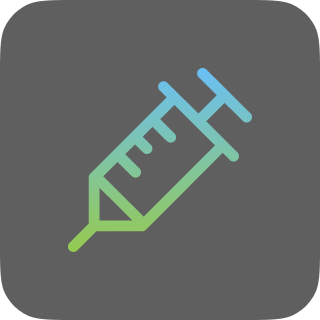Should I Be Worried About My Child?
Heavy metals can have serious, detrimental, and irreversible effects on our brains, especially on a child’s developing brain. Exposure to the above metals has been associated with learning, cognition, and behavioral problems.
It is unclear what amount of these would have to be ingested for a negative effect. Also, it is unclear if there needs to be constant ingestion of the metal for long periods before the brain is harmed. This is due to the ability of our body to clear these harmful substances, varying between individuals.
In any case, the best practice would be to minimize exposure to these harmful elements. However, if you have any concerns about your child’s symptoms, set up a sick visit with one of our pediatricians.
Top 5 Ways to Decrease Foods High in Heavy Metals
High levels of heavy metals find their way into our food via pollution, contamination, packaging, and manufacturing, and many are naturally occurring elements that make up the Earth’s crust. As crops are grown, they absorb nutrients from the soil.
Manufacturers and organizations must lobby for strict threshold levels they need to meet. Currently, manufacturing companies can set their criteria to deem safe for consumption, and some don’t even have a specific threshold for mercury. Writing to local senators may help, but this may take some time before the change is seen. In the meantime, there are other ways to minimize risk right now.
1. Check Your Water
Reports of water quality are readily available via local county websites. Tap water is heavily monitored and tested to make sure it is safe. Water from a well can have high levels of arsenic, and older water pipes can contaminate the water with lead. You can contact your local health department to test your water. Bottled water is not heavily tested and has more lenient regulations surrounding it.
2. Breastfeed if Possible
The American Academy of Pediatrics recommends breastfeeding as an infant’s only source of nutrition in the first four to six months of life. We do recognize this is not feasible for many. At PAK Pediatrics, we help mothers who wish to breastfeed by offering lactation/breastfeeding services with an internationally board-certified lactation consultant. This is offered to mothers and infants even if they are not a part of the PAK family.
3. Consider Making Your Own Baby Food
Making your own baby food isn’t as hard as you might think, and baby food is not “healthier” or “better” for babies. The consistency of baby food you aim for should depend on the child’s developmental stage (not necessarily the child’s age). Talk to your provider to determine what is appropriate for your child and discuss food introduction.
4. Cereals and Grains
Rice cereal is not the only first food option for infants; oatmeal has been established as a safe alternative. Rice has a habit of absorbing more arsenic, so it may be a good idea not just to offer rice or rice cereal. Other fortified cereals include oats, barley, multigrain, farro, bulgur, and quinoa. Avoid products that use rice syrup (usually seen in toddler foods). In my practice, I encourage parents to provide their children with whole, unprocessed foods that they blend into the appropriate consistency. As always, talk to your provider to determine what foods and consistency suit your specific child based on developmental stage, not age.
- A pro-tip from Dr. Reymunde: “Being Latinx, I understand that rice is integral to their food culture in many communities. Brown rice seems to have the highest levels of arsenic, while white basmati and sushi rice seems to have the least amount. When cooking rice from scratch, rinse it before cooking (this also washes off some of the fortifiers in it, though), cook it in extra water, and then drain off the excess when done!”
5. Serve a Variety of Foods From a Variety of Sources
All of us need to have a well-balanced diet. Encourage plenty of fresh fruits and vegetables (rinsed in cool water), grains, and lean protein sources. Offer homemade pureed or cut-up fruits instead of juices. For those who refuse, try having the child be involved in prepping the food. Have them pick out produce and help wash and prepare it. Offer dipping sauces or cut/arrange it in fun ways. Even if they refuse, always have some on the plate; the more they see it, the more they will become comfortable with it!
5 Secrets Sources of Heavy Metals You Don’t Know About!
1. Smoking. Arsenic was found in exponentially elevated amounts in children exposed to it second- and third-hand. This includes cigarettes and e-vaping devices, and cadmium and lead levels were also increased in these children.
2. Cosmetics. Lead can be found in cosmetics, especially those from the Eastern Hemisphere. These are absorbed through our skin and, if undetected, can cause long-term exposure, and that can cause irreversible damage to the developing brain.
3. Spices. Another source of lead and other heavy metals can be spices. These, since they are grown in soil, can have elevated levels of heavy metals if they are not regulated.
4. Certain occupations. Workers involved in wood preservation, glass production, metalworking, construction, smelting, mining, and welding can all have heavy metal exposures.
5. Supplements and herbal medications. These are not well regulated in many instances and thus can have high levels of heavy metals through processing and added ingredients. Many Ayurvedic and Chinese patent medicines contain heavy metals.










